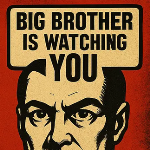 Fed Chair Jerome Powell recently stated quantitative tightening is about to end. What’s more, this will happen well before the Fed’s balance sheet ever gets close to $4 trillion, which is where it was prior to the coronavirus money printing festival.
Fed Chair Jerome Powell recently stated quantitative tightening is about to end. What’s more, this will happen well before the Fed’s balance sheet ever gets close to $4 trillion, which is where it was prior to the coronavirus money printing festival.
If you recall, between 2020 and 2022 the Fed spiked its balance sheet to $8.9 trillion. To do so it created credit out of thin air and loaned it to the U.S. Treasury through purchases of Treasury securities. This process is known as quantitative easing.
The Treasury used the debt infusions to send out round after round of stimmy checks, among other things. This drove consumer price inflation to 40-year highs.
Any hope consumer prices would ever return to their pre-2020 level is gone. Over the last three years the Fed has brought its balance sheet down to about $6.6 trillion. Now it’s throwing in the towel before the job is even halfway done.
Last week, while speaking at the National Association for Business Economics conference in Philadelphia, Powell said: Continue reading







